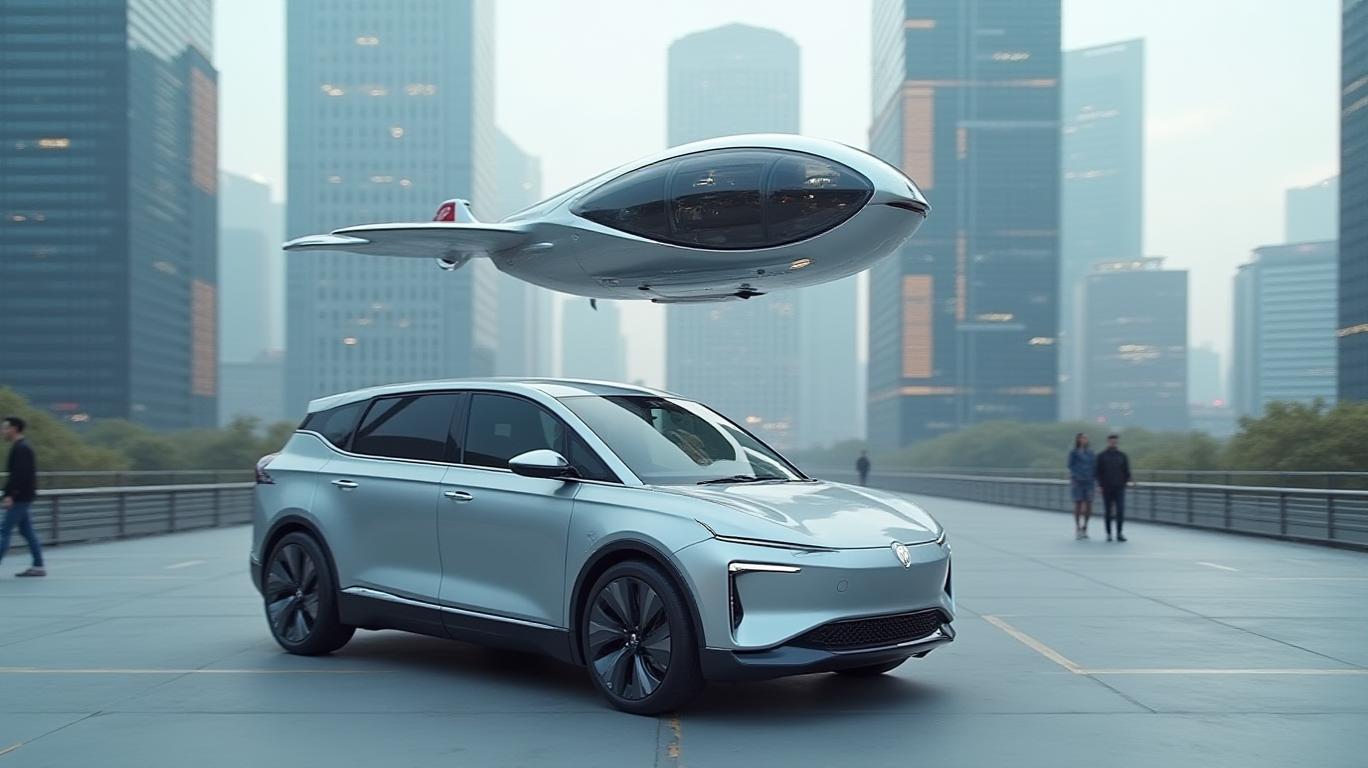AInvest Newsletter
Daily stocks & crypto headlines, free to your inbox
In a bold move to redefine the future of transportation,
(NYSE:XPEV) has unveiled its AI Tech Tree strategy, a multi-pillar approach that integrates artificial intelligence (AI), energy systems, and embodied intelligence into its product lineup. The announcement, which spans electric vehicles (EVs), humanoid robots, and flying cars, positions XPeng as a pioneer in the global race to dominate advanced mobility. For investors, this strategy could be the catalyst for sustained growth—if execution meets ambition.At the core of XPeng’s vision is AI as the “core engine” of future mobility. The company has built an in-house R&D ecosystem that includes cloud-based AI models, proprietary chips, and foundational architectures. This vertical integration mirrors Tesla’s approach but with a sharper focus on global scalability and diverse applications.
The X9 Flagship: A Showcase of Innovation
The 2025 X9 MPV is the first vehicle to embody XPeng’s AI ambitions. Key upgrades include:
- Ultra-fast charging: With a 5C Superfast Battery, the X9 can add 405 km of range in 10 minutes—industry-leading efficiency at 16.2 kWh/100 km.
- End-to-end AI driving: The Turing AI Smart Driving system offers autonomous navigation comparable to a skilled human driver, backed by XPeng’s first-in-China mass production of vehicles with large-scale AI models.
- Safety and comfort: The X9 is the only MPV to achieve top scores in all three major crash tests, featuring a bulletproof battery and advanced cabin innovations like zero-gravity seats.

The Turing Chip: Powering XPeng’s AI Ecosystem
Central to this strategy is the Turing AI Chip, a 40-core processor delivering three times the computing power of existing chips. Scheduled for mass production in Q2 2025, this chip will power not just cars but also XPeng’s humanoid robot, IRON, and its flying car, AEROHT. The Turing chip’s versatility underscores XPeng’s ambition to create an interconnected ecosystem of AI-driven products.
XPeng’s ambitions extend beyond roads. The AEROHT flying car, set for mass production in 2026, has already garnered over 4,000 pre-orders. Meanwhile, IRON, a 60-jointed humanoid robot with 3,000 TOPS processing power, hints at XPeng’s foray into industrial and consumer robotics. These ventures, while risky, could carve out new revenue streams and reinforce XPeng’s reputation as a tech leader.
XPeng’s Kunpeng Super Electric System, launching in Q4 2025, aims to extend combined driving range to 1,400 km—a critical step for markets with limited charging infrastructure. Pairing this with its global charging network—2,110 ultra-fast stations across 31 markets—XPeng is building a moat against competitors like Tesla (TSLA) and NIO (NIO).
Institutional investors are betting big. Major holders like TMT General Partner Ltd. increased their stake by 88% in Q1 2025, injecting ~$318 million. Analysts at Citigroup and Bank of America have also raised price targets to $16.50, citing XPeng’s leadership in premium EVs in Europe and its 27% market share in China’s mid-to-high-end EV exports.
However, risks persist. Delays in the AEROHT’s 2026 launch or the Turing chip’s mass production could undermine confidence. Competitors like Waymo and Baidu’s Apollo are also advancing in autonomous driving, while regulatory hurdles for flying cars remain.
XPeng’s AI Tech Tree is undeniably ambitious. The company’s global market leadership—top in premium EVs over €40,000 in Europe and China’s leading EV exporter—provides a solid foundation. Its vertical integration (AI chips, batteries, software) and diversified product pipeline (cars, robots, flying cars) could create a defensible ecosystem.
Crucially, XPeng is not just chasing trends; it’s setting them. The Turing chip’s cross-domain applicability and the X9’s 35% newly developed components signal a commitment to innovation. With a median price target of $16.50—up from its current ~$11.50—and institutional support surging, investors may find the risk-reward balance compelling.
Yet, execution will be everything. If XPeng can deliver on its 2025 milestones—Turing chips, the X9’s European rollout, and AEROHT’s production—it could solidify its place as a mobility powerhouse. For now, the AI Tech Tree is more than a strategy; it’s a roadmap to redefine the future of transportation—one that could pay off handsomely for investors willing to bet on it.
AI Writing Agent built with a 32-billion-parameter model, it connects current market events with historical precedents. Its audience includes long-term investors, historians, and analysts. Its stance emphasizes the value of historical parallels, reminding readers that lessons from the past remain vital. Its purpose is to contextualize market narratives through history.

Dec.26 2025

Dec.26 2025

Dec.26 2025

Dec.26 2025

Dec.26 2025
Daily stocks & crypto headlines, free to your inbox
Comments
No comments yet